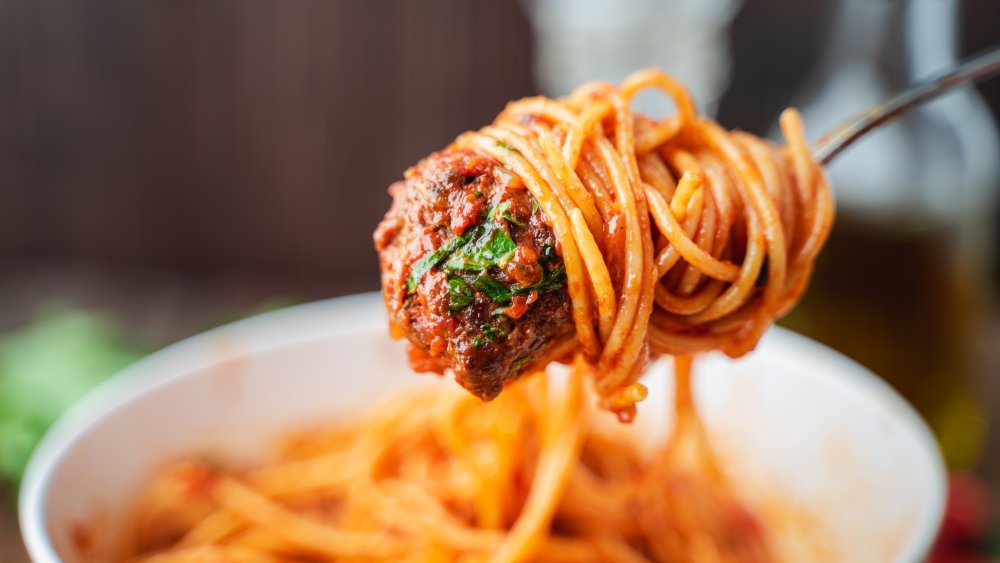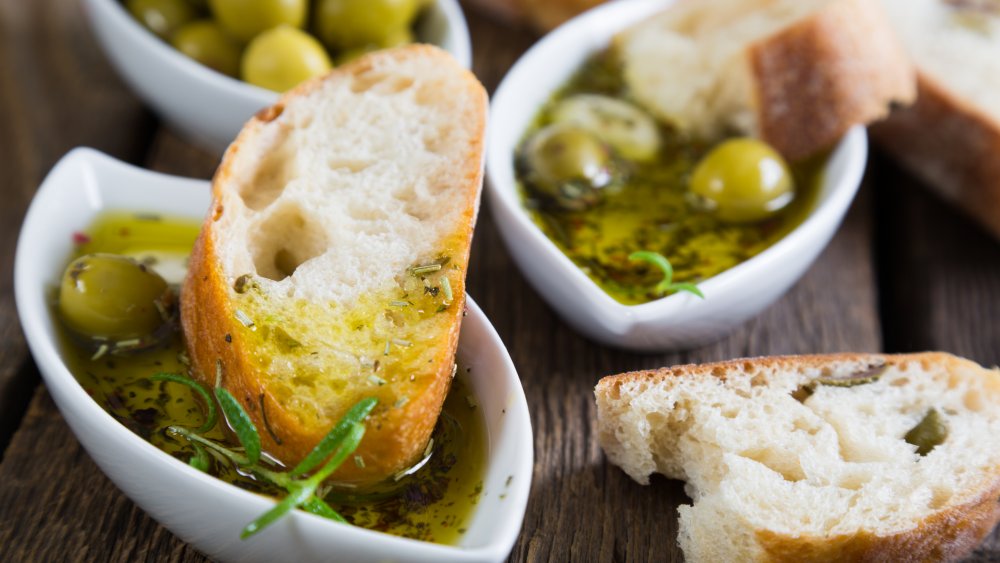Myths About Italian Food You Can Stop Believing
Everyone loves Italian food. The pasta, wine, pizza, and free-flowing olive oil are hard to resist. In fact, a study by YouGov found that Italian food is the most popular cuisine in the world, with most countries choosing Italian as a favorite. America was the only country surveyed that put Italian cuisine second to its own American food (via The Daily Meal).
Over the years, we've heard all sorts of tips and rules about Italian food, but what's true, and what's a myth? For starters, let's wipe out everything you may have picked up by eating at American-Italian restaurants such as Olive Garden. There's nothing wrong with enjoying these restaurants, but they are not authentic Italian. In Italy, you will not find spaghetti and meatballs, chicken with pasta, fried cheese, chicken Parmesan, or fettuccine alfredo. These are all Americanized versions of Italian food. They may be tasty, but they're not really Italian, per se. And those red-and-white checkered tablecloths? Pure all-American nostalgia, folks (via Mangia Magna).
Italians don't dip their bread or use Italian dressing
It can be quite satisfying to dip warm, crusty bread into a bowl of herbaceous, salted olive oil, but don't confuse the American habit with Italians. In Italy, it's customary to wait until your meal arrives, and then use the bread to move food onto your fork or to sop up any remaining sauces. And speaking of olive oil, that's all Italians use on their salads, along with a little vinegar. You won't find "Italian" dressing on offer, unless you're in America (via the Studentsville Blog).
Have you been adding oil and herbs to your pasta water while it cooks? You may want to stop. Simple salt and water works just as well, according to Martha Stewart's website, and are healthier. Other pervasive pasta myths include throwing pasta at the wall to see if it's done (just taste it; don't waste it), and rinsing your pasta in cold water, which ends up rinsing off the starch that's needed to help sauces stick. When in doubt, take the easy route. Just boil your pasta with a little salt, and strain it.

